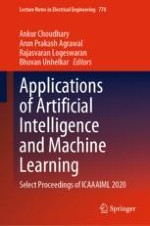The book presents a collection of peer-reviewed articles from the International Conference on Advances and Applications of Artificial Intelligence and Machine Learning - ICAAAIML 2020. The book covers research in artificial intelligence, machine learning, and deep learning applications in healthcare, agriculture, business, and security. This volume contains research papers from academicians, researchers as well as students. There are also papers on core concepts of computer networks, intelligent system design and deployment, real-time systems, wireless sensor networks, sensors and sensor nodes, software engineering, and image processing. This book will be a valuable resource for students, academics, and practitioners in the industry working on AI applications.
